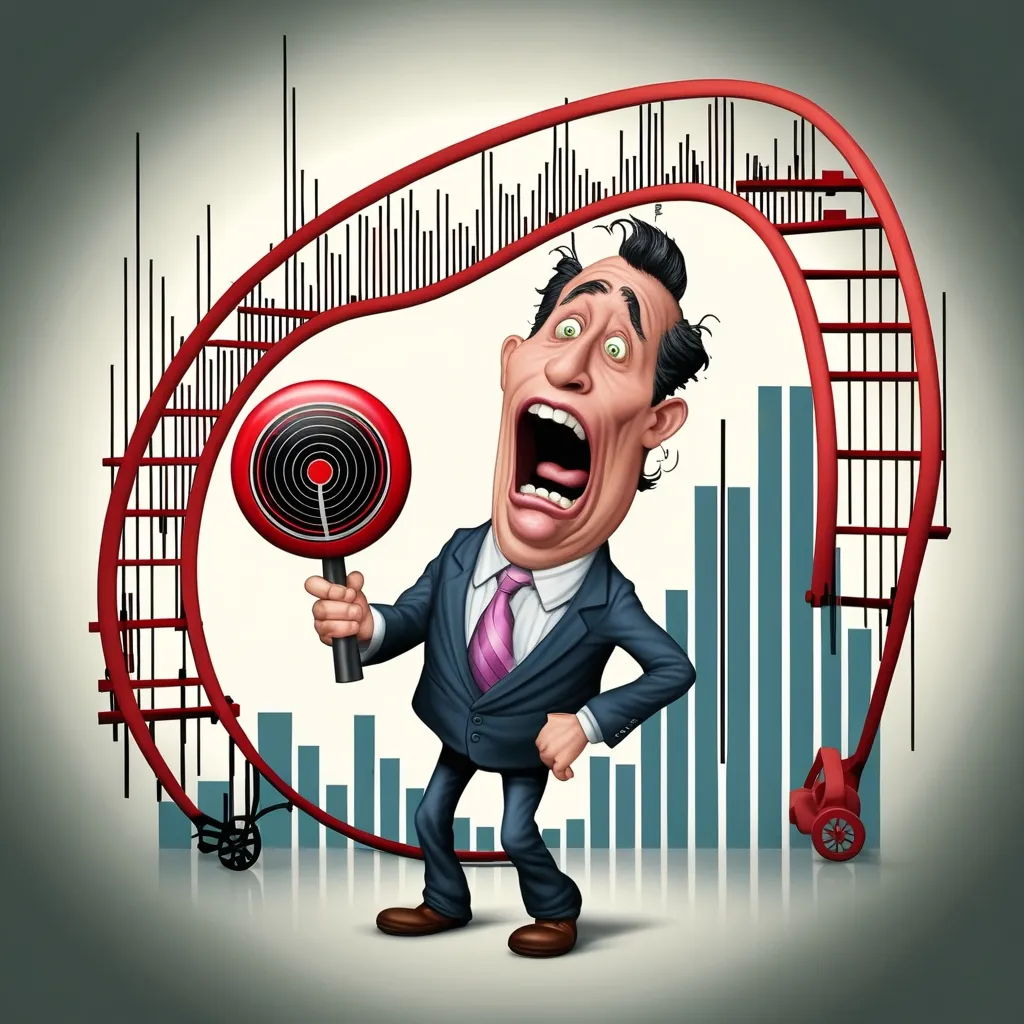In the ever-changing landscape of finance, it’s easy to get caught up in the latest trends and technological advancements. However, some of the most valuable insights for modern investors can be found by looking back at the past. Historical wisdom, gleaned from legendary investors and economic cycles, can provide a robust foundation for your investment strategy.
Learning from Economic Cycles
One of the most significant lessons from history is the importance of understanding economic cycles. These cycles, which can span decades, offer valuable insights into market behavior and investor psychology. For instance, the period following the tech bubble burst in the early 2000s saw a significant shift in investor behavior. As interest rates were cut to bolster the economy, investors began to lose interest in both stocks and bonds, seeking alternative investments like hedge funds and private equity.
This shift highlights a crucial point: economic conditions are not static. The current era, marked by the end of accommodative central bank monetary policies, is a prime example. Legendary investor Howard Marks notes that the days of ultra-low interest rates are behind us, and investors must now adapt to a new environment where risk and reward assumptions need to be reassessed.
The Power of Historical Data
Historical data can be a powerful tool in shaping your investment strategy. By analyzing market performance over extended periods, you can identify patterns that might not be immediately apparent. For example, a strategy based on a 10-year cycle can help you navigate the ups and downs of the market. This approach suggests that if the return on an index like the MSCI World over the past decade is exceptionally high, it may indicate that the market is overvalued, and future returns could be disappointing.
This method is not just about numbers; it’s about understanding the underlying dynamics. During the 1980s and 1990s, stocks from advanced economies performed exceptionally well, but this was not always reflected in corporate performance. In the early 2000s, despite significant growth in revenue and profits, stock returns were dismal. This disconnect between corporate figures and stock prices is a valuable lesson in not judging investments solely on recent performance.
Timeless Wisdom from Legendary Investors
Legendary investors have left behind a treasure trove of wisdom that remains relevant today. Ben Graham, the father of value investing, famously said that “in the short run, the market is a voting machine, but in the long run it is a weighing machine.” This insight encourages you to look beyond short-term market fluctuations and focus on an investment’s intrinsic value, determined by concrete factors like earnings, assets, and dividends.
Graham’s approach was built on the principle of buying undervalued stocks and holding them until their true worth was recognized by the market. This patient and disciplined approach has been echoed by other legendary investors. Warren Buffett, for instance, has emphasized the importance of never losing money and the need to be patient and disciplined in your investment decisions.
The Intersection of Economics and Psychology
Investing is not just about economics; it’s also deeply psychological. Seth Klarman, a prominent value investor, notes that investing is the intersection of economics and psychology. Understanding human behavior, including your own cognitive biases and emotional influences, is crucial for making rational and profitable decisions.
This psychological aspect of investing is often overlooked but is vital in navigating market volatility. Recognizing when fear or euphoria is driving market decisions can help you make more informed choices. For example, during the global financial crisis of 2008 and the onset of the pandemic, many investors panicked, but these moments turned out to be some of the best buying opportunities.
The Importance of Humility and Continuous Learning
Charlie Munger, Warren Buffett’s business partner, emphasizes the importance of humility and continuous learning in investing. “Knowing what you don’t know is more useful than being brilliant,” he says. This humility helps you avoid making mistakes by staying away from things you don’t understand and encourages you to learn more.
This principle is not unique to investing; it applies to many areas of life. By acknowledging the limits of your knowledge, you can avoid costly mistakes and cultivate a mindset that values long-term growth and risk management.
Applying Historical Lessons to Modern Strategies
So, how can you apply these historical lessons to your modern investment strategy? Here are a few practical tips:
- Focus on Intrinsic Value: When evaluating investments, look beyond current market prices and focus on the intrinsic value of the asset. This involves analyzing earnings, assets, and dividends to determine if the stock is undervalued or overvalued.
- Be Patient: Investing is a long-term game. Avoid getting caught up in short-term market fluctuations and be patient enough to let your investments mature.
- Understand Economic Cycles: Recognize that economic conditions are cyclical and adjust your strategy accordingly. For instance, if interest rates are expected to remain stable or rise, you may need to reassess your risk and reward assumptions.
- Diversify: Spread your investments across different asset classes to mitigate risk. This could include stocks, bonds, real estate, and alternative investments.
- Learn from Mistakes: Historical data is full of examples of what went wrong and what went right. Learn from these mistakes to avoid repeating them in your own investments.
Personal Touches and Real-World Examples
When I first started investing, I was drawn to the stories of legendary investors like Warren Buffett and Howard Marks. Their strategies seemed almost mythical, but as I delved deeper, I realized that their success was rooted in simple yet profound principles.
One of the most impactful lessons I learned was the importance of patience. During the early 2000s, when the tech bubble burst, many investors lost significant amounts of money. However, those who held onto their investments and waited for the market to correct saw their portfolios recover and even grow over time.
Another lesson I learned was the value of diversification. By spreading my investments across different asset classes, I was able to mitigate risk and ensure that my portfolio remained stable even during turbulent times.
Blending Old with New
In today’s fast-paced world, it’s easy to get caught up in the latest trends and technological advancements. However, blending these modern tools with the timeless wisdom of historical figures and events can create a richer and more nuanced investment strategy.
For instance, using historical data and economic cycles to identify undervalued assets can be combined with modern tools like financial analytics software to make more informed decisions. This blend of old and new can help you navigate the complexities of modern markets while staying grounded in the principles that have stood the test of time.
Conclusion
Investing is not just about making money; it’s about building wealth over the long term. By drawing inspiration from the past, you can create a robust and resilient investment strategy that stands firm in diverse economic conditions.
Historical wisdom is not just a relic of the past; it’s a living, breathing guide that can help you make better investment decisions. Whether you’re a seasoned investor or just starting out, the lessons from legendary investors and economic cycles are invaluable.
So, the next time you’re considering an investment, take a moment to reflect on the past. Look at the economic cycles, the wisdom of legendary investors, and the timeless principles that have guided successful investments for centuries. By doing so, you’ll be better equipped to navigate the complexities of modern markets and build a portfolio that truly reflects your long-term goals.






